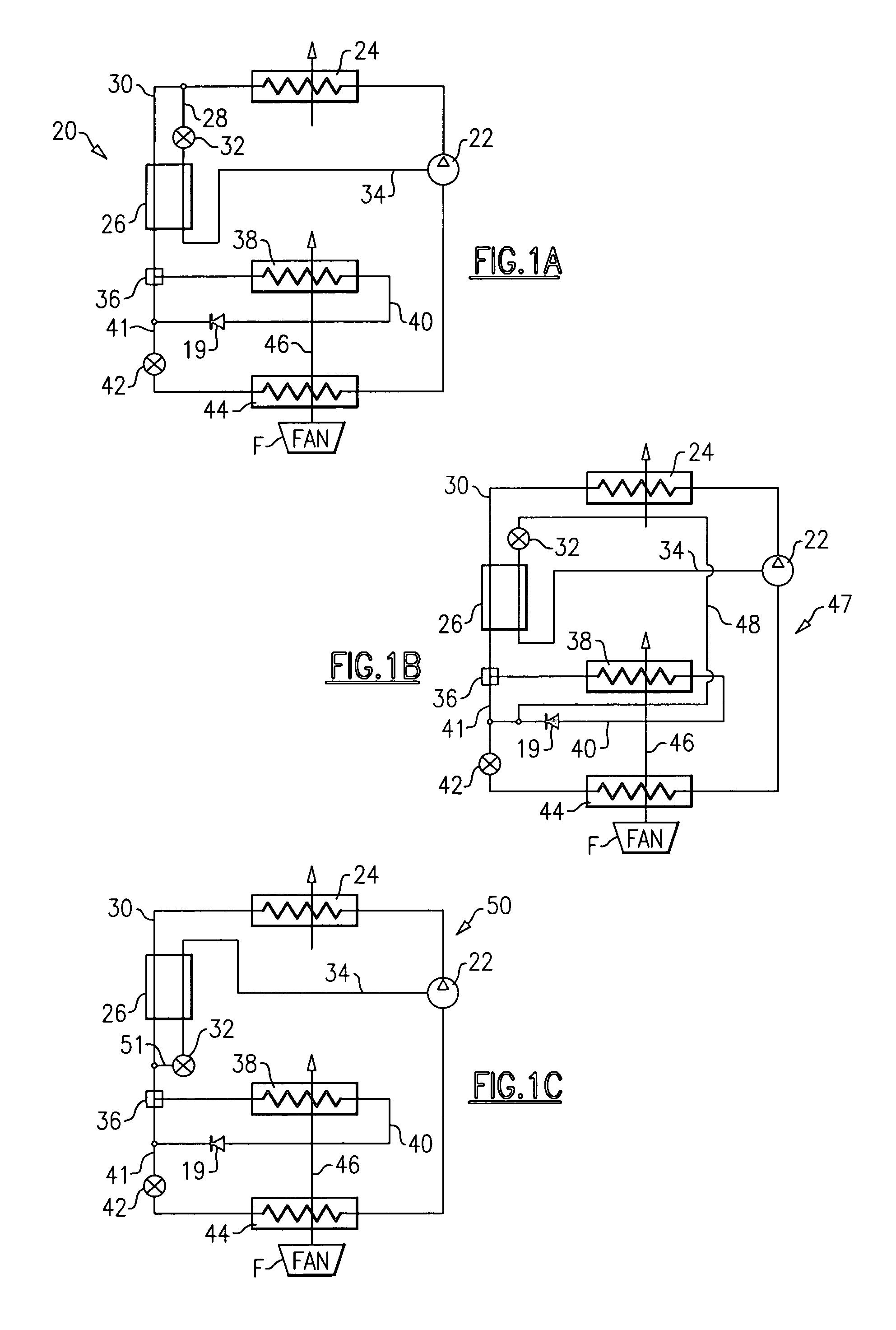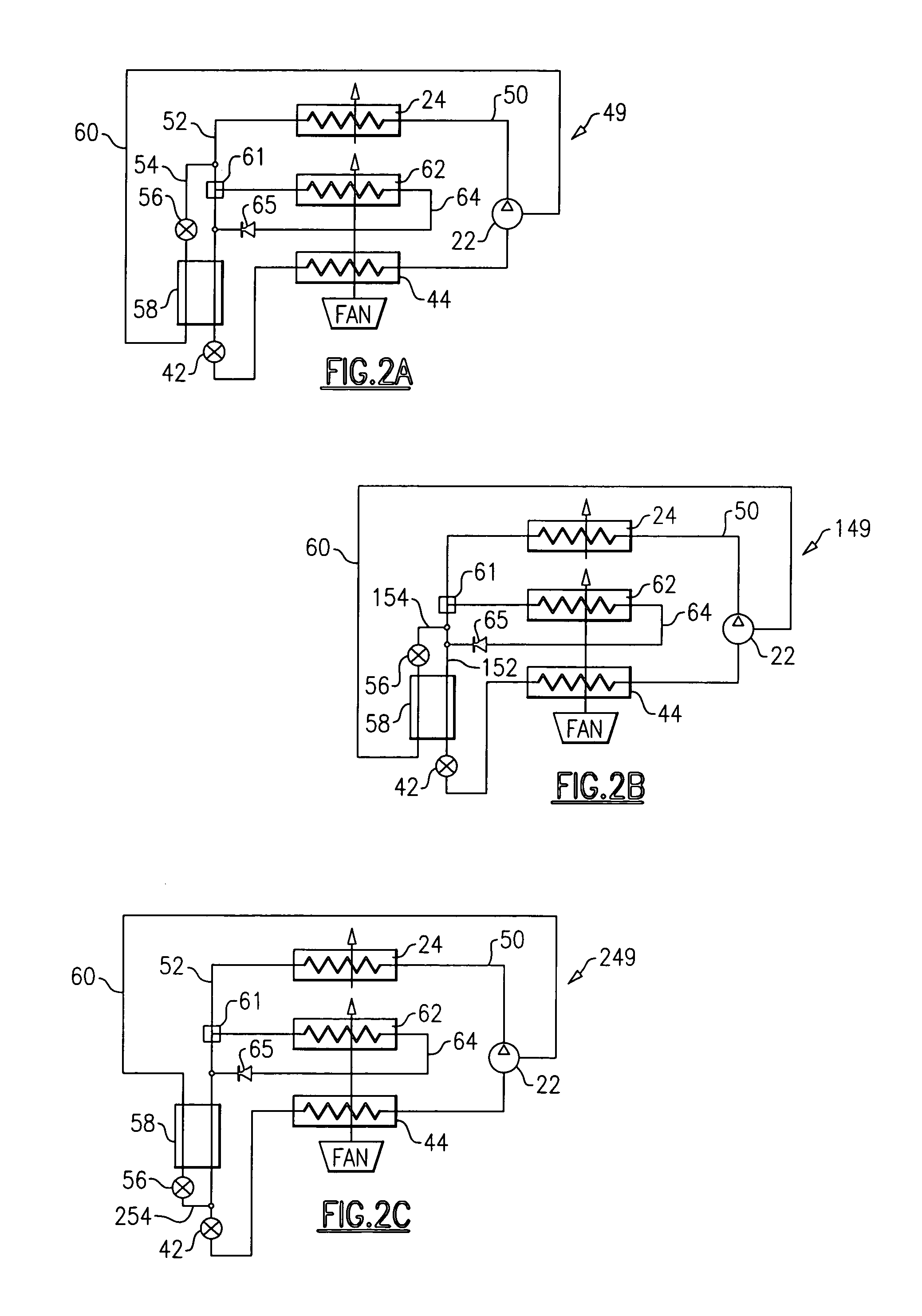Refrigerant systems with reheat and economizer
a technology of refrigerant system and economizer, which is applied in the field of refrigerant system, can solve the problems of refrigerant cycle design challenges and the variations of this basic concept have yet to be fully developed, and achieve the effects of improving an overall system performance, enhancing system performance, and improving the overall system performan
- Summary
- Abstract
- Description
- Claims
- Application Information
AI Technical Summary
Benefits of technology
Problems solved by technology
Method used
Image
Examples
embodiment 70
[0034]FIG. 3A shows another embodiment 70, wherein the three-way valve 72 is positioned downstream of the condenser 24. In this embodiment, the three-way valve 72 is preferably a regulating device that otherwise can be substituted by a pair of conventional preferably regulating valves. In the FIG. 3A embodiment, the refrigerant passing through line 74 reaches the reheat coil 76 and then rejoins the main refrigerant flow at the junction point 77. As shown, a tap line 79 located downstream from the reheat coil 76 and the check valve 73 passes through the economizer expansion device 32, and through the economizer heat exchanger 26, returning refrigerant through line 34 to the compressor 22. In this embodiment, the main refrigerant flow is preferably split into two parallel flows with one passing through the economizer heat exchanger 26 and another through the reheat coil 76. Again, the basic operation of the system to provide conditioned air is similar to that described above. Obviousl...
embodiment 100
[0039]FIG. 6A shows another embodiment 100, wherein the three-way valve 102 is positioned downstream of the compressor 22. The economizer heat exchanger 104 is located upstream of the reheat coil 106 in this embodiment. Tap 108 is positioned downstream of the reheat coil 106 and passes through the economizer expansion device 110, such that the tapped refrigerant can cool the main flow in the economizer heat exchanger 104. The tapped refrigerant is usually returned as a vapor to the economizer port of compressor 22. Again, the system operation is similar to that shown in FIG. 5, and is described above.
embodiment 120
[0040]FIG. 6B shows yet another embodiment 120, which is similar to the FIG. 6A embodiment, however, rather than tapping the refrigerant downstream of the reheat coil 106 for the economizer heat exchanger 104, the refrigerant is tapped from a line 112, upstream of the reheat coil 106.
[0041]FIG. 7 (system 202) shows similar arrangement to FIGS. 6A and 6B with the economizer loop positioned downstream of the condenser coil (rather than downstream of the reheat coil) and the tap line 203 is branched of the reheat circuit line 206 downstream of the reheat coil 204. As it was mentioned before, the tap line can be placed downstream of the junction point 208 of the main circuit and the reheat branch and upstream of the main expansion device 210, or on the line 209 downstream of the economizer heat exchanger 211 and upstream of the junction point 208. For other aspects, see the description of the other embodiments.
[0042]The system 399 shown in FIG. 8 is similar to the system shown in FIG. 7...
PUM
 Login to View More
Login to View More Abstract
Description
Claims
Application Information
 Login to View More
Login to View More - R&D
- Intellectual Property
- Life Sciences
- Materials
- Tech Scout
- Unparalleled Data Quality
- Higher Quality Content
- 60% Fewer Hallucinations
Browse by: Latest US Patents, China's latest patents, Technical Efficacy Thesaurus, Application Domain, Technology Topic, Popular Technical Reports.
© 2025 PatSnap. All rights reserved.Legal|Privacy policy|Modern Slavery Act Transparency Statement|Sitemap|About US| Contact US: help@patsnap.com



